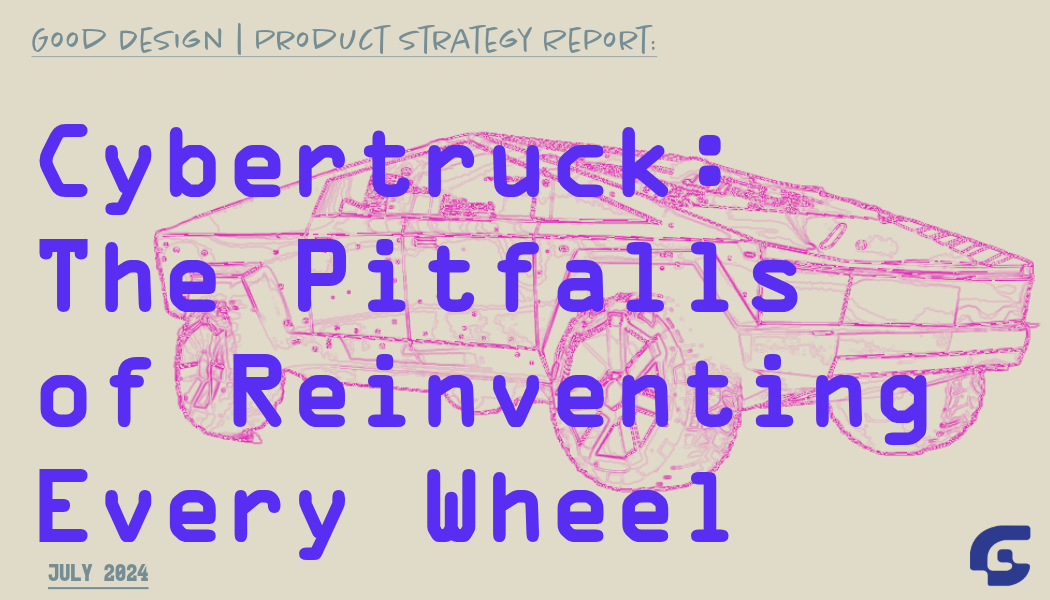Hertz's Tesla Bet: A Cautionary Tale on Overlooking Strategic Assumptions
Tam Danier • 2024-04-10
Hertz's Tesla Bet serves as a cautionary tale on the consequences of overlooking strategic assumptions. The article explores how Hertz's ambitious move to order 100,000 Tesla electric vehicles ultimately led to financial setbacks and unsold inventory, emphasizing the importance of validating assumptions, embracing experimentation, aligning capabilities, prioritizing customer experience, and leveraging analytical frameworks for successful business strategies.
In late 2022, the once-bankrupt car rental giant Hertz made a bold bet by ordering 100,000 Tesla electric vehicles worth over $4 billion. The ambitious move aimed to electrify Hertz's rental fleet and capitalize on the booming EV market. However, just months later, the deal went "horribly sideways," leaving Hertz with dented finances and a stockpile of unsold Teslas. This cautionary tale is a prime example of the pitfalls that can arise when strategic assumptions are overlooked or left unvalidated.
At GIO, our DVFU framework and "What Must Be True" (WMBT) analysis empower organizations to scrutinize their strategies rigorously, exposing hidden risks and blind spots before they escalate into costly failures. Let's delve into Hertz's Tesla misadventure through these analytical lenses and uncover the lessons every business leader should heed.
DVFU Analysis
Desirability: Aligning with Customer Needs
Assumption: There is substantial unmet demand for rental EVs that Hertz could capture.
The Pitfall: While EV adoption is growing, Hertz needed to validate if customers truly desired an all-EV rental experience at scale. Factors like range anxiety, charging infrastructure availability, and pricing sensitivities could have impacted desirability.
Validation Opportunity: Hertz could have conducted extensive market research, surveys, and pilot programs to gauge real consumer interest and willingness to pay for an EV rental option before committing billions.
Viability: Assessing Business Potential
Assumption: Electrifying the fleet would provide a sustainable competitive advantage and revenue growth.
The Pitfall: Hertz underestimated the total cost of ownership for EVs, including charging infrastructure, maintenance, and potential resale value impact. The high upfront costs strained finances without a clear path to profitability.
Validation Opportunity: Rigorous financial modeling, scenario planning, and a phased rollout could have stress-tested the viability assumptions and allowed for course corrections.
Feasibility: Evaluating Technical Capacity
Assumption: Hertz's existing operations could seamlessly support and scale an all-EV fleet.
The Pitfall: Introducing a new vehicle technology likely required significant operational overhauls, from training staff to adapting maintenance facilities – efforts that appear to have been underestimated.
Validation Opportunity: Piloting EV operations in select markets and conducting readiness assessments could have identified capability gaps and informed a more measured, phased implementation strategy.
Usability: Ensuring Seamless Adoption
Assumption: Customers would quickly adapt to the EV rental experience without significant friction.
The Pitfall: Unfamiliarity with EV charging, range planning, and user experience differences could have hindered adoption and led to customer frustration.
Validation Opportunity: Extensive user testing, intuitive educational resources, and a focus on simplifying the EV rental process from end-to-end could have smoothed the adoption curve.
WMBT Analysis
While the DVFU framework exposes the underlying assumptions, the "What Must Be True" (WMBT) analysis identifies the critical factors that needed to hold for Hertz's Tesla bet to succeed:
- Robust consumer demand for EV rentals at a price premium
- Availability of extensive EV charging infrastructure nationwide
- Operational readiness to support an all-EV fleet efficiently
- Compelling cost/revenue models to justify the multi-billion-dollar investment
- Seamless integration of EVs into the existing rental experience
- By systematically validating these key assumptions through pilots, market testing, and financial modeling, Hertz could have uncovered potential pitfalls early and adapted their strategy accordingly.
Lessons Learned
Validate Strategic Assumptions: Hertz's downfall underscores the importance of rigorously validating assumptions before making massive investments. Overlooking critical factors can lead to costly missteps.
Embrace Experimentation: Rather than going all-in, Hertz could have benefited from a phased, experimental approach – piloting EVs in select markets, gathering data, and iterating based on learnings.
Align Capabilities: Transformative initiatives often require realigning operational capabilities. Hertz likely underestimated the effort required to support an all-EV fleet seamlessly.
Prioritize Customer Experience: Businesses must ensure a seamless customer experience while pursuing innovation. Hertz's oversight in addressing potential EV adoption friction proved detrimental.
Leverage Analytical Frameworks: Tools like DVFU and WMBT provide structured approaches to scrutinize strategies, expose blind spots, and mitigate risks – advantages Hertz could have leveraged.
Hertz's failed Tesla bet is a stark reminder that even the boldest ideas can falter when critical assumptions go unchecked. By embracing GIO's DVFU framework, WMBT analysis, and a rigorous validation culture, businesses can confidently navigate uncertainty, aligning their strategies with customer needs, operational realities, and market dynamics.
GIO guides companies through transformative journeys as a product strategy and innovation consultancy, ensuring their ventures take flight on the wings of validated assumptions and data-driven decision-making. Embrace our analytical prowess and unlock enduring success in today's ever-evolving business landscape.
The GIO Team
About The Good Design | Center of Excellence Newsletter
For digital leaders aiming to drive growth through human-centric innovation, the Good Design Center of Excellence newsletter offers an inside look at GIO's approach. Through digestible videos and articles, you'll gain strategic insights to bridge the gap between vision and execution.





